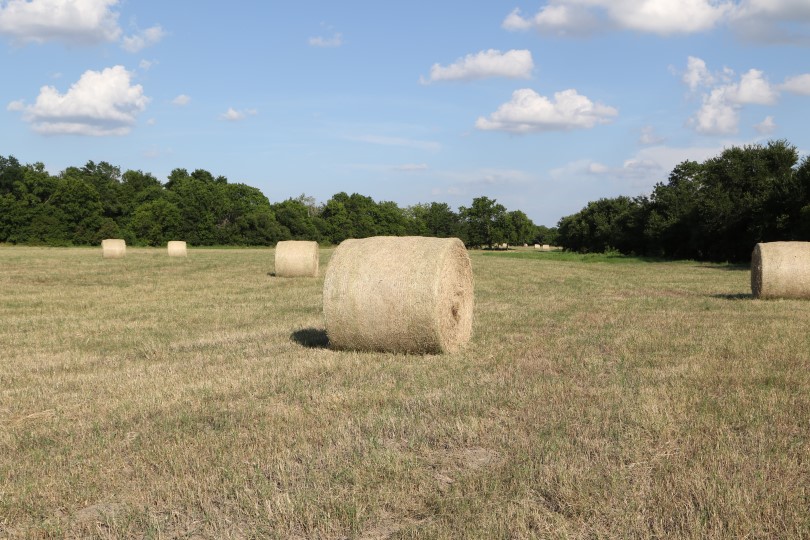By Shelby Shank
Field Editor
Two years of drought have severely depleted U.S. hay stocks, and this week’s winter storm will likely deplete those supplies in Texas even faster.
The latest Texas Direct Hay Report released by the U.S. Department of Agriculture (USDA) shows hay movement remains steady in all regions due to supplemental feeding for the winter months.
USDA reports show hay stocks were at 71.9 million tons as of December 2022. That’s 16.4% below the previous 10-year average and the lowest Dec. 1 stocks on record in the data going back to 1974.
Low supplies continue to drive up the prices for hay.
“Of course, with the law of supply and demand, if there’s less of it, it’s going to be more expensive,” Dr. Larry Redman, Texas A&M AgriLife Extension State Forage Specialist said. “But compounding that was the situation with the fertilizer prices. So, this has been a very expensive hay crop this past year to try to manage with the drought and the increased costs in fertilizer.”
Redman doesn’t anticipate fertilizer costs dropping significantly, leading to increased costs for this year’s hay crop.
Some farmers and ranchers are estimating about $85 per bale to break even.,
“Every thousand-pound round bale has about $50 worth of fertilizer in it, and $35 to bale it. There’s $85 right there just to break even,” Redman said in an interview with the Texas Farm Bureau Radio Network. “That doesn’t include a lot of other costs like herbicides and things like that.”
Redman suggests farmers and ranchers consider the maturity effect on forage, bale size and storage conditions to get the most out of the hay crop they grow or bales they purchase.
“When we look at the way these grass plants grow, the nutritive value is highest at the earliest stage of growth,” Redman said.
He recommends cutting Bermudagrass for cattle around 28 to 35 days of growth and for horses at 18 to 21 days, because horses need more leaf and less stem.
When it comes to bale size, knowing how much the bale weighs and the crude protein in the bale can impact the cost.
And how the hay is stored can impact the quality.
Bales stored exposed to weather in a field will have loss.
“If you take a six-foot round bale and you weather the outer six inches of that bale, you’ve given up almost a third of that bale,” Redman said. “With hay as expensive as it is, if we actually give away a third of it, that makes that hay that’s remaining much more expensive.”
Storing hay in a barn helps prevent that loss.
“We’ve been told for years by ag economist that a hay storage barn was the only building on the property that would actually pay for itself, and it pays for itself by reducing the amount of hay that we lose due to weathering,” he said. “That barn is supposed to pay for itself in about four to six years, and I do believe that’s the case.”
But not everyone can afford a hay storage building. Redman offered alternative solutions to storing hay using a tarp and keeping other factors in mind.
“It needs to be stored on sort of a gravely slope a little bit for the hay to not hold moisture and cause it to migrate up through the bottom of the bale,” Redman said. “Flat ends need to be together, two or three feet between the round sides of the bales, orient the rows north south to maximize east west sun exposure after each rainfall or dew event.”
For more information about bale density and storage, click here.
For more information about hay stocks, visit the Texas Direct Hay Report.

